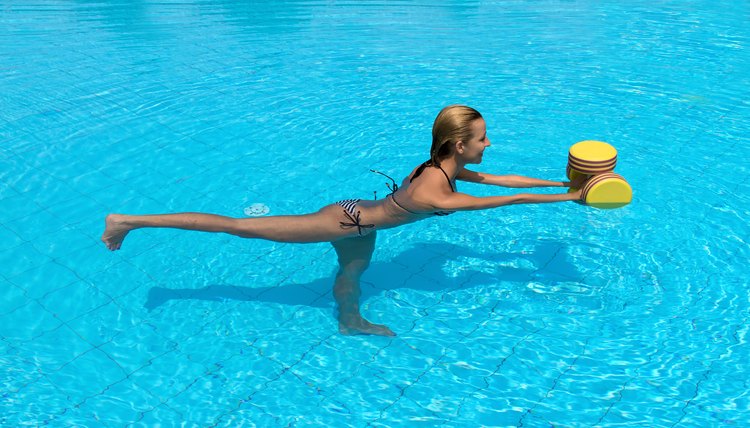The History of Water Aerobics

In the past, water therapy has been used for both religious and medicinal reasons. Over time, the use of water for therapy and healing purposes fell in and out of favor, according to the mores of the era. By the 20th century, however, water therapy had again come into practice and today is an accepted method of not only therapeutic exercise, but also aerobic exercise.
Ancient Forms of Water Therapy
From Asia to Greece, as early as 2400 BC, immersion in water was viewed as a religious experience and a method of healing. By 1500 BC, water was used to reduce fevers and by 800 BC was used for healing in Bath, England. The Greeks and then the Romans believed that water had curative powers, using it to treat arthritic joints and other conditions.
By 500 AD, the use of water and baths fell into disfavor. It wasn't until the 1700s that water as medicine came back into use, with the development of hydrotherapy by German doctor Sigmund Hahn.
A Familiar Face
The first organized form of water aerobics was practiced by television fitness professional Jack LaLane during the 1950s. LaLane's daily television shows promoted a healthy diet and the benefits of aerobic exercise.
As interest in health and fitness rose in the 1970s and 1980s, aquatic aerobics began gaining in popularity. The benefits of a low-impact aerobic exercise program in the water became more apparent and aquatic exercise became the exercise program of choice for athletes rehabilitating from injuries, patients recovering from surgery and the elderly.

The History of Water Aerobics
Modern Water Aerobics
The modern form of water aerobics, or aquatic exercise, is a fitness program that takes place in the pool. The class is designed to help you elevate your heart rate and breathing to get the benefits of a cardiovascular workout without placing undue stresses on your muscles and joints. It is often performed in waist- or chest-deep water and features forcing your body to move despite the resistance of the water, known as eddy resistance.
Benefits of Aquatic Exercise
Whether you choose to swim or take an aerobics class in the pool, your body will get virtually the same benefits. Working out in waist- or chest-deep water allows you to exercise nearly every muscle and joint in your body. In addition, the water helps cool your body to keep you from getting too hot. Because of the buoyancy of the water, you only have to support about half of your body weight if you’re in waist-deep water. This allows you to exercise at a greater intensity without risk of joint injury.
References
Resources
Writer Bio
Keith Strange spent more than a decade as a staff writer for newspapers in the southeastern United States, winning numerous awards for his work. He has a B.S. in wellness/sports medicine from Averett University and completed graduate work in exercise physiology. Strange is a former competitive martial artist and holds a third-degree black belt in tae kwon do.
